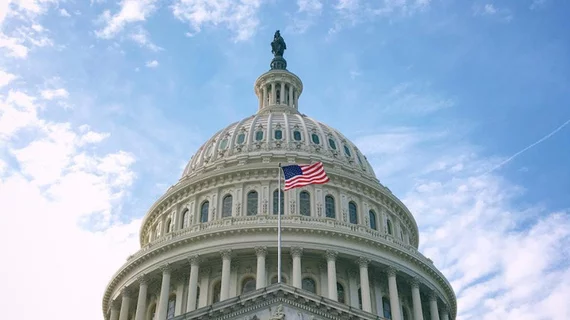Radiologists made more than $16M in federal political contributions from 2003 to 2016
Self-identified radiologists made $16.25 million in federal political contributions from 2003 to 2016, according to a new study published in the Journal of the American College of Radiology.
Overall, more than 35 million political contributions were reported by the FEC during that time frame. More than 36,000 of those contributions were attributed to 7,515 radiologists, meaning 23 percent of the country’s radiologists made at least one contribution.
The authors noted that radiologists have been largely nonpartisan with their contributions, even as the political climate grew increasingly partisan during that 13-year span.
“In contrast to prior studies suggesting that physician political contributions were politically polarized, we observed that the large majority of radiologists’ contributions were nonpartisan in nature, with less than a quarter of their dollars going to Republicans (14.4 percent) and Democrats (8.4 percent) combined,” wrote lead author Amy K. Patel, MD, of Beth Israel Deaconess Medical Center in Boston, and colleagues. “Importantly, despite increasing political partisanship nationally, we found that radiologists’ nonpartisan contributions steadily increased over time. In contrast, radiologists’ party-targeted contributions remained relatively flat. This all suggests that radiologists overall prioritize profession over party affiliation when making political contributions.”
The American College of Radiology (ACR) Foundation formed the Radiology Political Action Committee (RADPAC) in 1999, and it has grown into the specialty’s largest political action committee (PAC). Patel et al. found that RADPAC contributions from radiologists increased from more than $351,000 in 2003 to more than $1.1 million in 2016.
This, the authors explained, provides even more evidence that the specialty is taking a nonpartisan approach to contributing money.
“We observed that radiologists making election contributions overwhelmingly supported their profession rather than any other individual cause, organization, or candidate,” the authors wrote. “In taking this broader approach of classifying contribution recipients, our results portray a specialty that is far more unified than divided in its political advocacy. Indeed, given the 3-fold increase in radiologists’ contributions to RADPAC in recent years, the specialty seems increasingly aligned in its specialty-first prioritization.”
RADPAC was the third largest medical specialty PAC in 2016 in terms of contributions made, according to the committee’s 2017 annual report. Patel and colleagues wrote that medical specialty PACs are likely to “only become more relevant” in the years ahead and, considering the fact that the average contribution amounts are low in comparison to radiologists’ salaries, there are “additional opportunities for growth and influence in the federal political space.”

